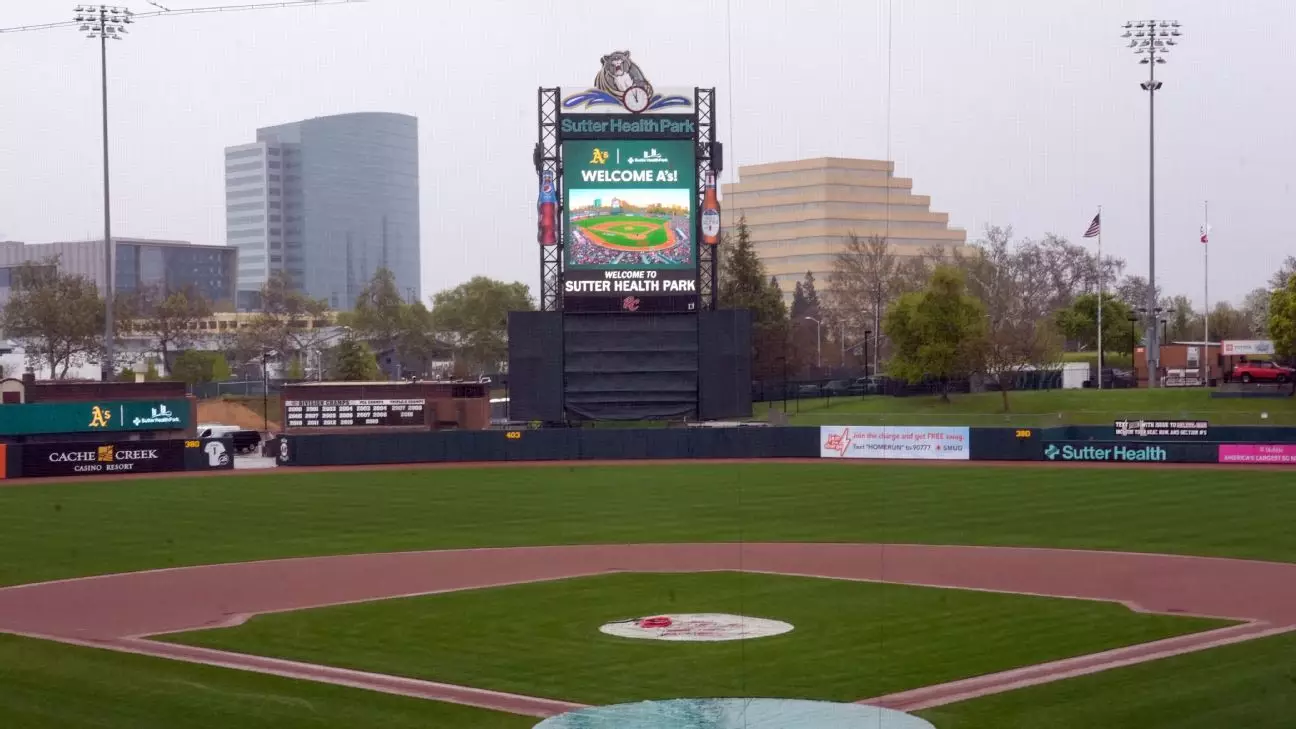The landscape of baseball is evolving, and nowhere is this more evident than at Sutter Health Park in San Francisco. The park, traditionally home to the San Francisco Giants’ Triple-A affiliate, is now sharing its turf with the Oakland Athletics as they embark on a three-year stint in Sacramento. This unprecedented collaboration between major and minor league teams presents unique challenges, particularly in maintaining a high-quality playing surface. To navigate this uncharted territory, the teams are implementing innovative strategies that spotlight the rising importance of meticulous field management, reshaping both the game and its experience for players and fans alike.
Murray Cook, a vital figure in this endeavor and President of BrightView Sports Turf, has collaborated closely with the Giants’ and A’s groundskeeping teams. His role emphasizes not only maintaining the sod but elevating it amidst the hustle of back-to-back games. One of the most striking developments is the fourfold increase in on-site staff dedicated to field maintenance. Cook envisions this augmented crew as essential in preserving the integrity of the turf throughout what could be a grueling season of intensive play.
Natural Grass Triumphs Over Artificial Turf
At the heart of this transformation is a pivotal decision: opting for natural grass instead of the initially proposed artificial turf for the new ballpark in Las Vegas, which the Athletics anticipate moving into for the 2028 season. The reasoning is equally compelling: players prefer natural grass for its absorption properties, aesthetic appeal, and superior playing conditions. Cook succinctly articulated this sentiment, emphasizing that while synthetic fields have their merits, the preference for natural surfaces remains universally acknowledged among players. This shift signals not just a trend, but a growing commitment to prioritizing player comfort and performance.
Maintaining a natural turf in a shared environment adds layers of complexity, particularly in high-traffic areas like the pitcher’s mound and around the bases. Cook anticipates that maintenance will require diligent oversight, especially during peak play periods in late spring. Utilizing nearby backup fields is a necessary strategy for replacing and patching wear and tear, ensuring that the quality of play remains uncompromised. Such logistical maneuvers demonstrate a forward-thinking approach to sports maintenance, emphasizing adaptability and preparedness.
Technological Integration in Field Management
In an impressive fusion of sports and technology, drones and on-field sensors are being employed to monitor the field’s condition daily. This innovative approach allows for a proactive maintenance strategy rather than a reactive one, enhancing both player safety and performance. Detecting areas that require immediate attention can mean the difference between a standard playing experience and one that is exceptional—every microsecond matters in the world of competitive sports.
Moreover, the introduction of an advanced watering system beneath the infield clay is a game changer. This infrastructure not only aids in maintaining moisture during dry spells but also supports root health through strategic watering. Moreover, the technology features a quick-deployment system that assists in managing water flow during heavy rainfall. This dual capability of promoting growth while preventing waterlogging demonstrates a comprehensive understanding of turf management.
Community and Experience: A Dual Focus
The on-field performance and quality of the experience provided to fans and players intertwined intimately during the Giants’ recent exhibition against the River Cats. Cook conveyed the positive feedback received from participants, indicating that the enhanced playing surface significantly contributed to an enjoyable event. The success of this collaborative effort extends beyond just the game; it encompasses everything from the thrill of competition to the community engagement that baseball embodies.
As Sutter Health Park gears up for an exciting season filled with reciprocal enthusiasm from both major and minor league teams, one can’t help but marvel at the far-reaching implications of these turf management innovations. They not only elevate the physical quality of the game but also reflect an adaptive sports culture that embraces technological advances and prioritizes the collective enjoyment of the game. This evolving approach signifies a brighter, greener future for baseball, one that acknowledges the sacred relationship between players, the field, and their loyal supporters.


Leave a Reply